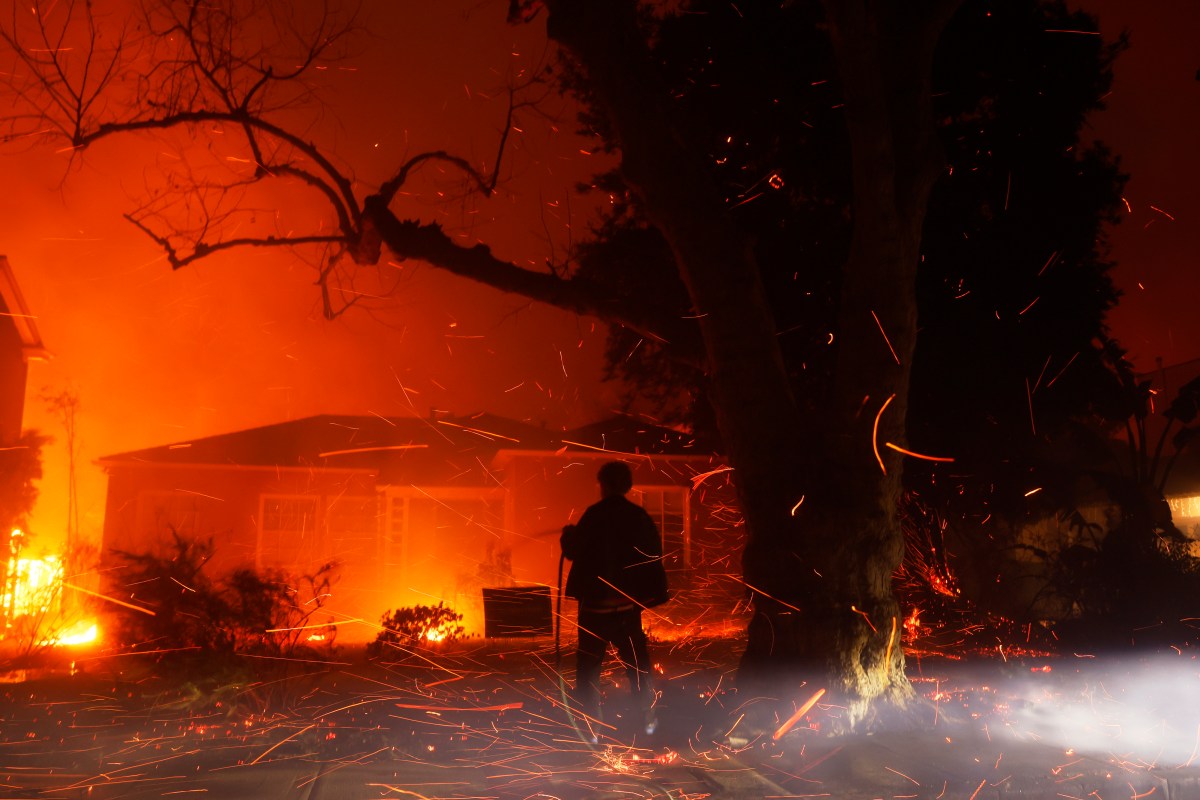Understanding Santa Ana Winds: A New Challenge in California’s Fight Against Wildfires
As California grapples with persistent wildfire threats, the unpredictable Santa Ana winds pose an additional complication for firefighting efforts. These powerful gusts, which typically occur during the fall and winter months, can dramatically alter the landscape of fire containment and management. With experts warning that these winds can intensify existing fires and hinder containment strategies, it’s crucial to understand their implications in the broader context of California’s ongoing battle against wildfires.
What Are Santa Ana Winds?
Santa Ana winds are strong, dry winds that originate from high-pressure systems over the Great Basin and flow toward the coast of Southern California. These winds are characterized by their hot and dry nature, often leading to an increase in fire activity during the already perilous wildfire season. Typically, they occur in the fall and can last for several days, making them a significant weather phenomenon that influences fire behavior significantly.
The Mechanics Behind Santa Ana Winds
The formation of Santa Ana winds begins when a high-pressure system settles over the Great Basin, creating a pressure gradient that forces air to rush toward the lower pressure along the Southern California coast. As this air descends the mountains, it compresses and heats up, often reaching speeds of 40 to 70 miles per hour. This rapid descent and compression result in air that is not only hot but also extremely dry, which can exacerbate fire conditions.
The Impact of Santa Ana Winds on Wildfires
When discussing the Santa Ana winds and their impact on wildfires, several factors come into play:
- Increased Fire Spread: The winds can cause flames to spread rapidly, making it challenging for firefighters to contain blazes. What may start as a manageable fire can quickly become uncontrollable under the influence of these gusts.
- Spot Fires: The winds can carry embers over long distances, igniting spot fires ahead of the main blaze. This phenomenon can lead to multiple fronts that firefighters must combat simultaneously.
- Reduced Humidity: The dry, warm air associated with Santa Ana winds lowers humidity levels, further drying out vegetation and creating ideal conditions for fires to ignite and spread.
Challenges for Firefighters
Firefighting efforts during periods of Santa Ana winds are significantly complicated. Fire crews must adapt their strategies to address the unpredictability of wind patterns, which can change direction and intensity with little warning. Some of the challenges they face include:
- Resource Allocation: Fire departments may need to allocate resources to multiple locations simultaneously due to the potential for spot fires, which can stretch their capabilities thin.
- Evacuation Orders: The erratic nature of the winds can necessitate sudden evacuation orders, putting additional pressure on local emergency services to ensure public safety.
- Air Support Limitations: Helicopters and air tankers are often used to combat wildfires, but strong winds can limit their effectiveness or even ground them entirely, forcing crews to rely solely on ground efforts.
Historical Context and Recent Trends
Historically, Santa Ana winds have been linked to some of California’s most devastating wildfires. The 2018 Camp Fire, which destroyed the town of Paradise, is just one tragic example of how these winds can influence fire behavior. As climate change continues to exacerbate drought conditions, the frequency and intensity of Santa Ana events are expected to increase, heightening the threat of wildfires across the region.
In recent years, California has experienced an alarming rise in the number and intensity of wildfires, correlating with longer fire seasons. The Santa Ana winds, with their ability to fan the flames, have become an even more significant concern for firefighters and residents alike. California’s fire management strategies must evolve to effectively address the challenges posed by these winds.
Adaptation and Preparedness Strategies
To combat the challenges presented by Santa Ana winds, California has implemented various adaptation and preparedness strategies:
- Community Education: Local governments and fire departments have increased efforts to educate communities about wildfire risks and the specific dangers posed by Santa Ana winds.
- Improved Weather Forecasting: Advances in meteorological technology allow for better predictions of wind events, enabling firefighters to prepare more effectively for imminent threats.
- Fuel Management: Controlled burns and vegetation management are crucial strategies to reduce available fuel for wildfires, especially in areas prone to Santa Ana wind events.
- Emergency Response Coordination: Enhanced communication and coordination among local, state, and federal agencies ensure a more unified response during fire emergencies.
The Role of Climate Change
Climate change plays a crucial role in the increasing severity of Santa Ana winds and wildfires in California. Rising temperatures and prolonged drought conditions are expected to contribute to more extreme weather patterns, including enhanced wind events. This reality poses a significant challenge for residents, policymakers, and firefighting agencies as they strive to adapt to a changing climate.
Furthermore, the ongoing impacts of climate change necessitate a comprehensive approach to wildfire management, integrating mitigation strategies with long-term planning and community resilience efforts. Addressing the root causes of climate change is essential to reduce the frequency and intensity of both Santa Ana winds and wildfires in California.
Conclusion: Facing the Challenge Together
As California continues to face the dual challenge of wildfire threats and the unpredictable nature of Santa Ana winds, it is imperative that communities come together to enhance resilience and preparedness. By understanding the mechanics of these winds and their impact on fire behavior, Californians can better equip themselves for the realities of living in a fire-prone environment.
Investing in education, resource management, and climate change mitigation will be critical in ensuring safety and reducing the devastating impacts of wildfires. Through collective efforts, California can navigate the challenges posed by Santa Ana winds and work towards a more fire-resilient future.
See more Your Daily Weather



